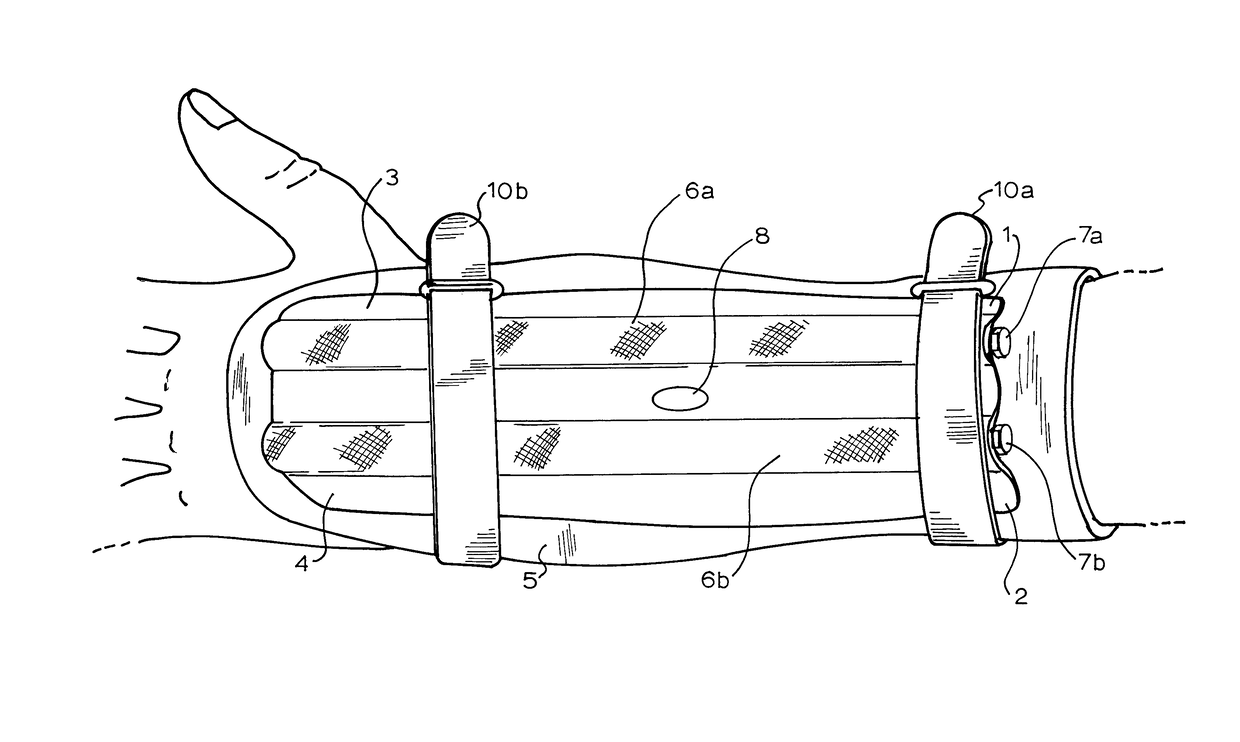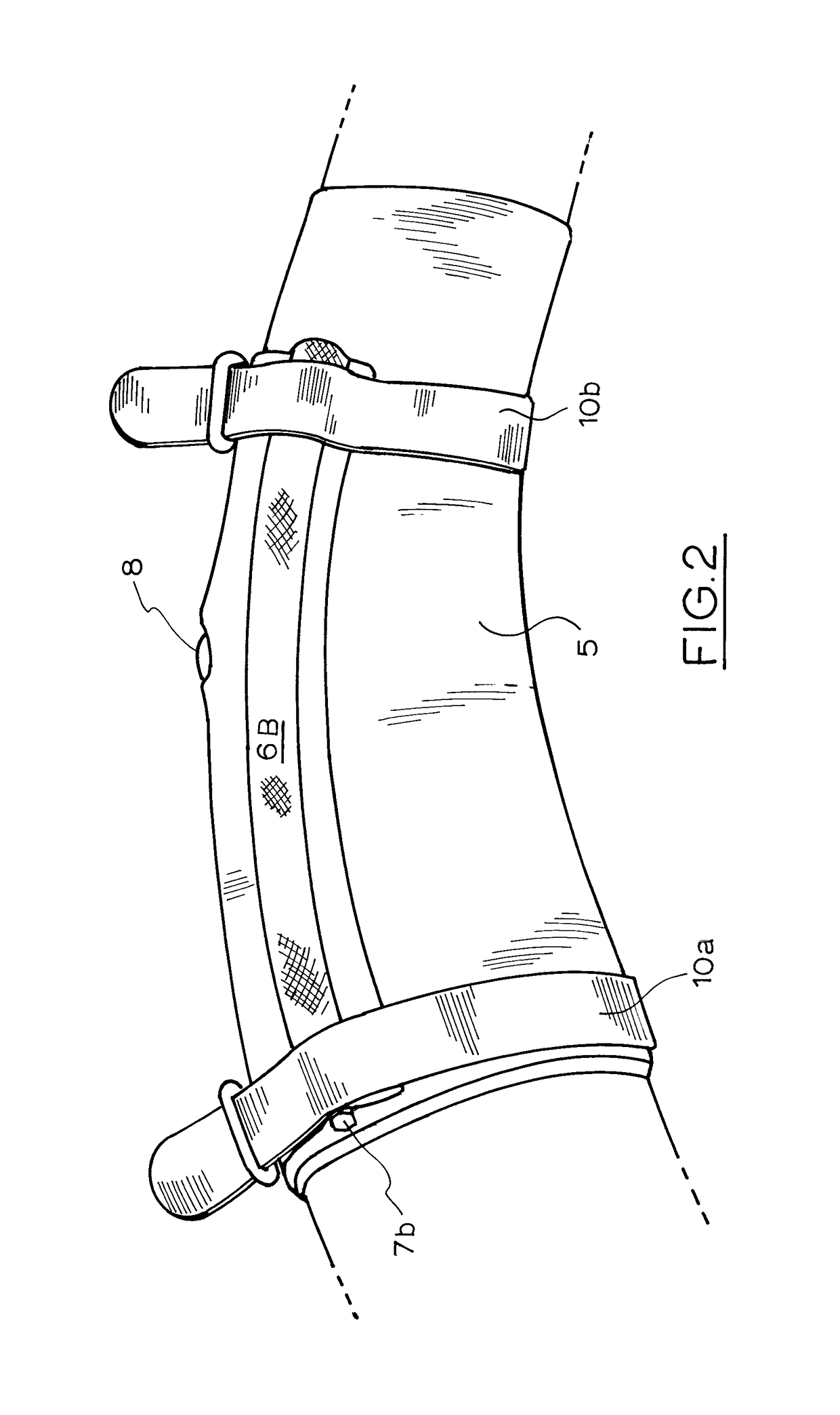Training device for limiting the movement of a player's forearm during a sporting action
a training device and sports action technology, applied in the field of sports players' training devices for limiting the movement of their forearms during sporting actions, can solve the problems of reducing reducing the comfort of the device, so as to achieve the effect of increasing the tension of the flexible rod assembly
- Summary
- Abstract
- Description
- Claims
- Application Information
AI Technical Summary
Benefits of technology
Problems solved by technology
Method used
Image
Examples
Embodiment Construction
[0035]The training device of the present invention can be used in relation to sporting actions including a golf swing, a roll in lawn bowls, tenpin bowling, cricket or any other sporting action that requires the arm and forearm to be held in a substantially straight or extended fashion during at least a portion of the sporting action.
[0036]FIGS. 1 and 2 show a first embodiment of the training device of the present invention. The device comprises a sleeve configured so as to be easily slid into position over the user's forearm and then upper arm, and two flexible and adjustable rods (or similar devices) which keep the user's arm in a straightened or almost fully extended position, when the arm is in a relaxed mode.
[0037]FIGS. 1 and 2 show an embodiment of the present invention, which includes an ‘overlaid section’, or patch (1-2-3-4) with two formed channels (6A and 6B) positioned on the exterior, posterior side of the sleeve. The device comprises a generally tubular, flexible sleeve...
PUM
 Login to View More
Login to View More Abstract
Description
Claims
Application Information
 Login to View More
Login to View More - R&D
- Intellectual Property
- Life Sciences
- Materials
- Tech Scout
- Unparalleled Data Quality
- Higher Quality Content
- 60% Fewer Hallucinations
Browse by: Latest US Patents, China's latest patents, Technical Efficacy Thesaurus, Application Domain, Technology Topic, Popular Technical Reports.
© 2025 PatSnap. All rights reserved.Legal|Privacy policy|Modern Slavery Act Transparency Statement|Sitemap|About US| Contact US: help@patsnap.com



